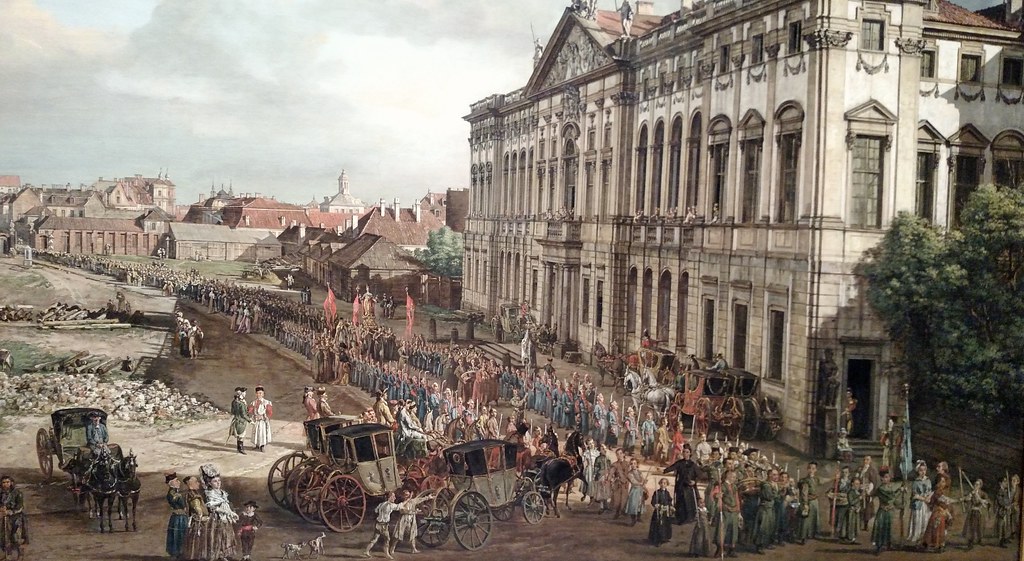GETTY CENTER
May 9–July 30, 2017
September 10 - December 31, 2017
Cleveland Museum of Art
02/25/2018- 05/20/2018
Giovanni Antonio Canaletto (Italian, 1697-1768) The Grand Canal in Venice from Palazzo Flangini to Campo San Marcuola, c. 1740. Oil on canvas. Bequest of Miss Tessie Jones in memory of Herschel V. Jones. Minneapolis Institute of Art.
The Rialto Bridge with the Festive Entry of the Patriarch Antonio Correr (detail), 1735, Michele Marieschi, oil on canvas. Osterley Park, The Palmer-Morewood Collection, National Trust (accepted in lieu of tax and transferred to the National Trust by Her Majesty's Government in 1984). Photo: National Trust Photo Library / Art Resource, NY
This fall, the Minneapolis Institute of Art (Mia) presents the first-ever exhibition to focus on view paintings as depictions of contemporary events. "Eyewitness Views: Making History in Eighteenth-Century Europe" features approximately 40 paintings from the golden age of European view painting.


Book:
King Charles III Visiting Pope Benedict XIV at the Coffee House of the Palazzo del Quirinale, 1746, Giovanni Paolo Panini. Oil on canvas.
Departure of Charles III from Naples to Become King of Spain, 1759, Antonio Joli, oil on canvas. Museo Nacional del Prado, Madrid. Image © Museo Nacional del Prado / Art Resource, NY
Luca Carlevarijs (Italian, 1663–1730);Regatta on the Grand Canal in Honor of Frederick IV, King ofDenmark (detail), 1711, The J. Paul Getty Museum, Los Angeles
The Bucintoro Departing from the Bacino di San Marco (detail), 1710. Luca Carlevarijs (Italian, 1663–1730). Oil on canvas; 134.8 × 259.4 cm. The J. Paul Getty Museum, Los Angeles 86.PA.600.
Pompeo Girolamo Batoni, Italian (Rome), 1708–87,
Later Duc de Choiseul, 1757, oil on canvas, The William Hood Dunwoody Fund, 61.62
Minneapolis Institute of Art

Hubert Robert (French, 1733-1808); The Fire at the Opera House of the Palais-Royal, about 1781.
Oil on canvas. Sarah Campbell Blaffer Foundation, Houston.

Hubert Robert (French, 1733-1808); The Fire at the Opera House of the Palais-Royal, about 1781.
Oil on canvas. Sarah Campbell Blaffer Foundation, Houston.
Bernardo Bellotto, Italian, 1722–80,
Procession of Our Lady of Grace in Front of Krasinski Palace,1778, oil on canvas,
The Royal Castle in Warsaw–Museum
Pierre-Jacques Volaire, French, 1729–99,
The Eruption of Vesuvius, 1771,
The Art Institute of Chicago
Book:
Eyewitness Views: Making History in Eighteenth-Century Europe
Canaletto, Bernardo Bellotto, Luca Carlevarijs, Giovanni Paolo Panini, Francesco Guardi, Hubert Robert—these renowned view painters are perhaps most famous for their expansive canvases depicting the ruins of Rome or the canals of Venice. Many of their most splendid paintings, however, feature important contemporary events. These occasions motivated some of the greatest artists of the era to produce their most exceptional work. Little explored by scholars, these paintings stand out by virtue of their extraordinary artistic quality, vibrant atmosphere, and historical interest. They are imbued with a sense of occasion, even drama, and were often commissioned by or for rulers, princes, and ambassadors as records of significant events in which they participated.
Lavishly illustrated and meticulously researched, this volume provides the first-ever comprehensive study—in any language—of this type of view painting. In examining these paintings alongside the historical events depicted in them, Peter Björn Kerber carefully reconstructs the meaning and context these paintings possessed for the artists who produced them and the patrons who commissioned them, as well as for their contemporary viewers.
This vital book represents a major contribution to the field of view painting studies and will be an essential resource for scholars and enthusiasts.
Lavishly illustrated and meticulously researched, this volume provides the first-ever comprehensive study—in any language—of this type of view painting. In examining these paintings alongside the historical events depicted in them, Peter Björn Kerber carefully reconstructs the meaning and context these paintings possessed for the artists who produced them and the patrons who commissioned them, as well as for their contemporary viewers.
This vital book represents a major contribution to the field of view painting studies and will be an essential resource for scholars and enthusiasts.



Comments
Post a Comment